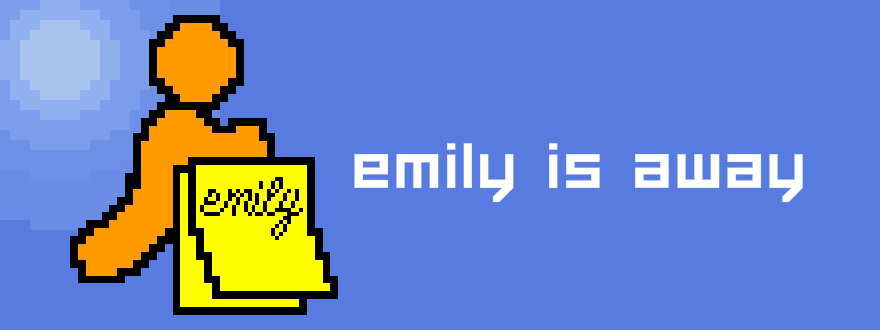


I think opening this game up to become a 'chat adventure' engine for other people to use to tell stories would be a great idea. I want to be able to talk to more than just one person. The only criticism I could give this game is that I was so enthralled by it that I want more story. This is extended to backspacing, and replacing your own typed words, just like we used to when we were talking on IM when we were overthinking what to say. It takes a few minutes to get used to, but by having the user's input make the player character type, you feel like you're typing the words he is saying – even though you're just spamming the keyboard. You start to feel what the game's main character does, towards her.Īnother brilliant mechanic the author has employed is the typing system. This immersion is helped greatly by making the player able to put in their own (real or false) name and screenname. The responses you can send emily are broad enough that your approach can vary wildly – mature, pining, jealous – and you can reflect your own personality onto the game. Usually these games suffer from a lack of immersion, forcing the user to go outside of their own decision-making to fit with what the author wants them to do.

The game is completely based around IM chats you have with a school friend 'Emily', and uses a menu-choice system for user interaction. This is a game which relies on the user's nostalgia as its primary emotive device, and for someone who has this shared experience with the author, it works perfectly. It incapsulates the confused angst of our late teen years, where for the first time, we realise, we have no idea who we are the transition to 'adulthood' – leaving our past behind – and becoming our true selves. What better age to experience this exciting development than highschool? Anyone who grew up with ICQ, AIM or MSN messenger at this time in their lives know exactly what this game is trying to do. The author has managed to create a simulation of exactly what social interaction was like for teenagers and young adults in the 2000s- the exciting development of instant messaging created, for the first time, a world where we are constantly connected, taking the first steps towards our social-media oriented world today. Reviewers seem to barely read the lines of text popping out of the fake chat window, let alone read between them.Įmily is Away is breathtaking. This doesn’t actually work taken out of the context of the UI, the writing is bland and vaguely creepy at best, and so it doesn’t really support those themes and ideas.īut one is privileged over the other so enormously, that it highlights a fault line in how we perceive games: Because the presentation is doing so much work to sell this feeling of nostalgia, this is taken as the overall effect and content of the piece. Those two halves work in concert: One sets up the piece’s emotional environment (wistful, nostalgic) and the other supplies the narrative arc and referential content that are supposed to play on those feelings. There are two components to how Emily is Away tells its story: The UI design, and the writing. There’s a real disconnect in how this game is talked about. My first impression of it was extremely positive, since it struck me as polished and inventive and very easy to get into.

EMILY AIM GAME FREE
Nonetheless, I did play this in the free beta version that I received as an IF Comp judge. Emily is Away is a text-focused game that was originally entered in IF Comp 2015, but withdrawn because the author also planned to release it to the public as a paid commercial work.


 0 kommentar(er)
0 kommentar(er)
